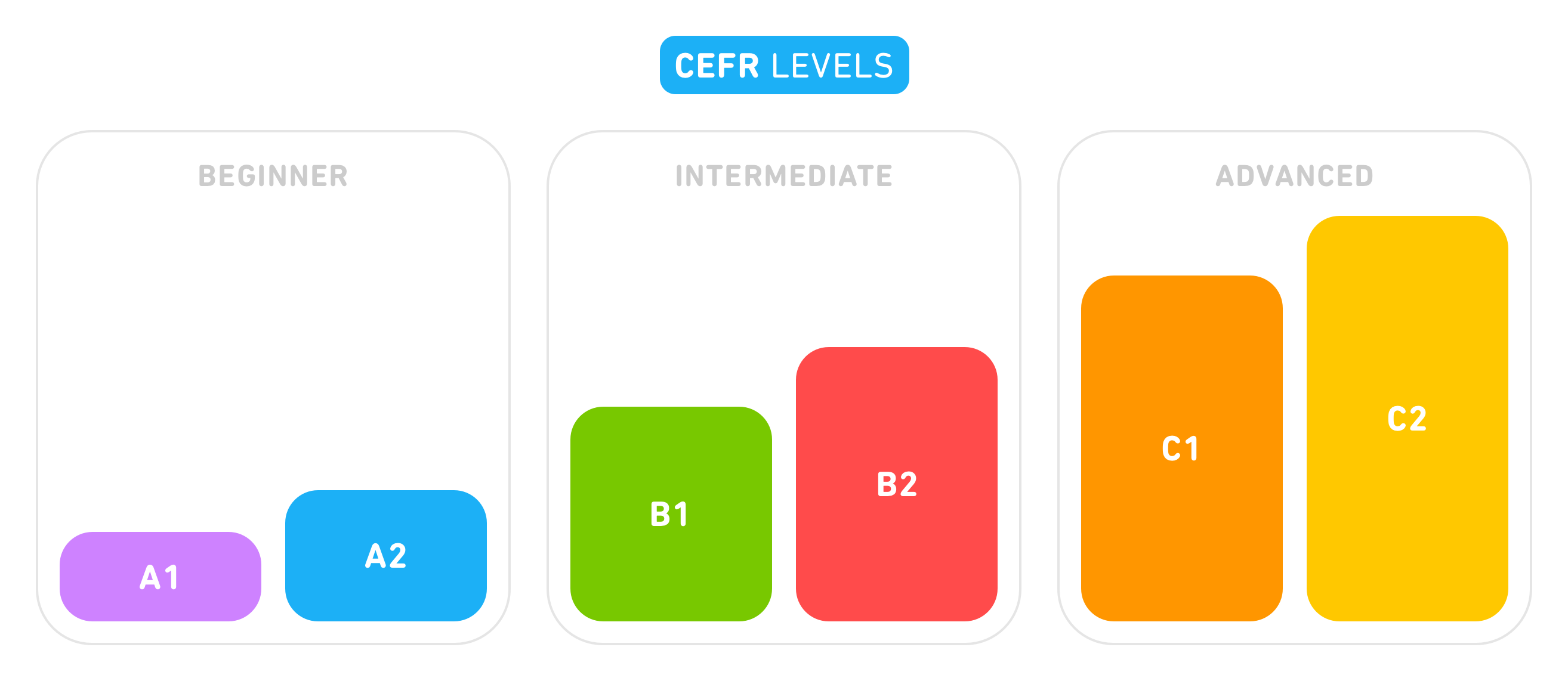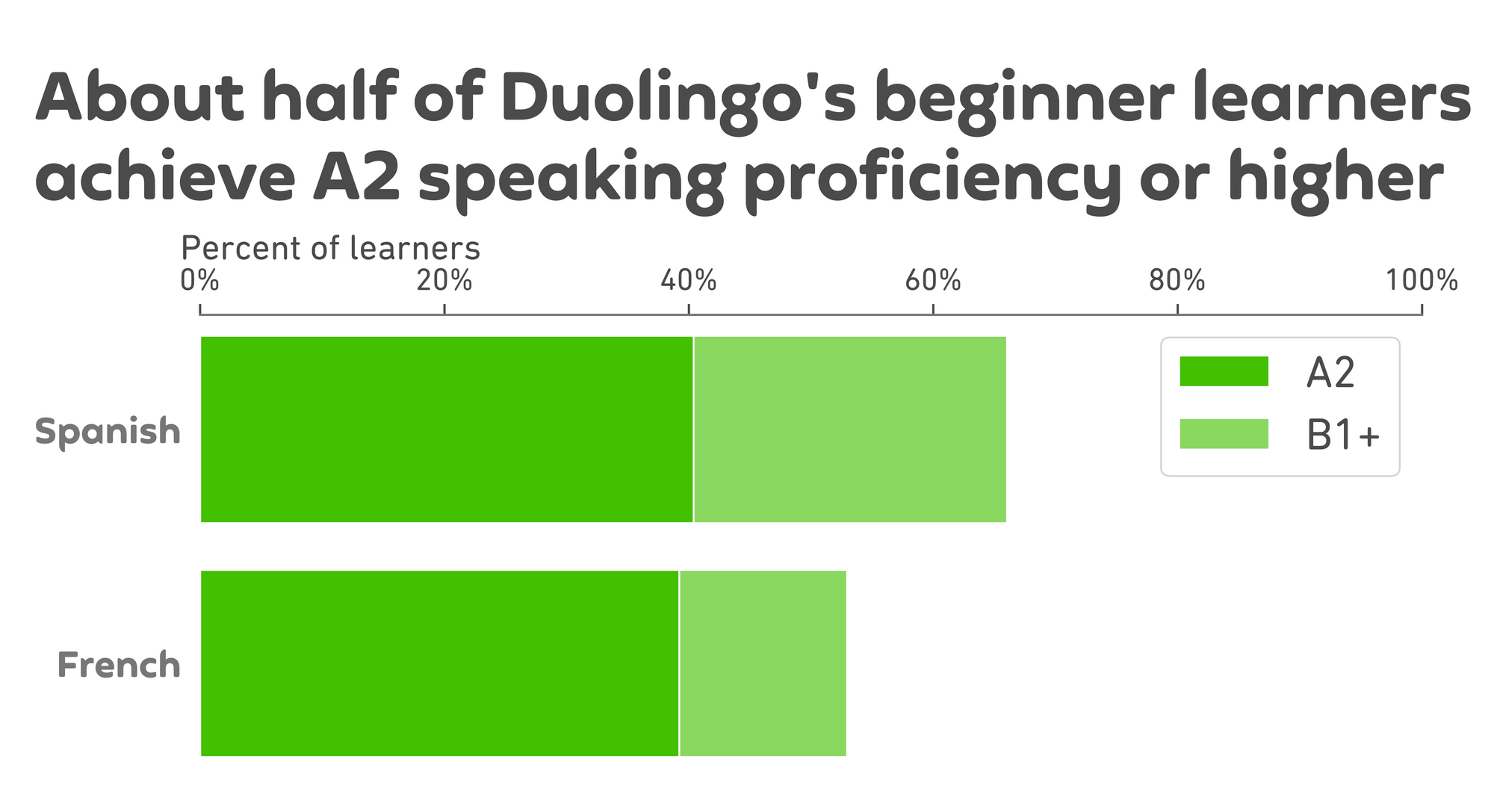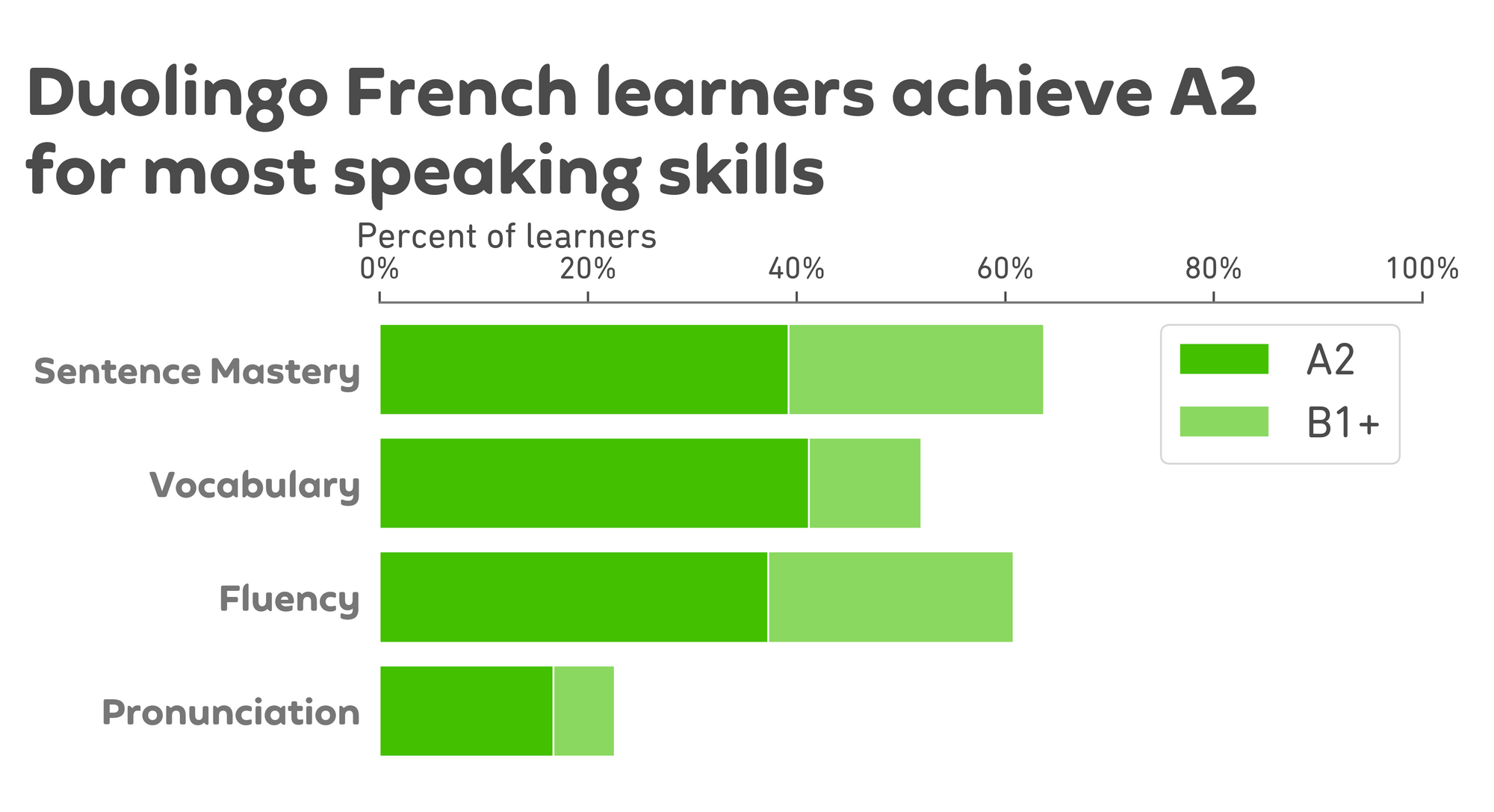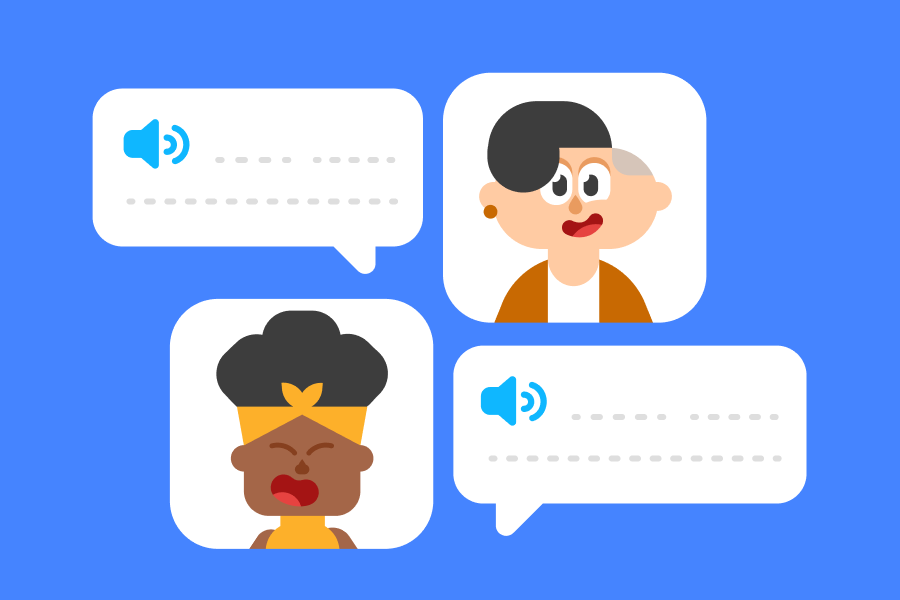Learning a language on Duolingo is fun, totally free, and research shows it's effective, too! Last year we shared results about how learners who complete Unit 5 have reading and listening scores equivalent to four semesters of university language classes.
We've just completed a new research study with great news for speaking skills, too: about half of Duolingo learners in our Spanish and French courses achieved at least A2-level speaking skills, meaning they're able to produce complete sentences, remember words quickly, and speak comfortably about everyday topics at a conversational pace. In this post, we're sharing how we measured learners' speaking skills and what these exciting results mean for our learners and courses.
Testing learners' speaking abilities
By reaching the end of Unit 5, Duolingo learners have completed all the lessons in the beginner sections of our courses, called A1 and A2, and are starting intermediate B1 material. These proficiency levels are based on international standards established in the Common European Framework of Reference for Languages (CEFR). Unit 5 is already significant progress, so we wanted to know how well our courses are preparing learners to speak.
In order to test speaking ability, we first needed to find a very specific group of Duolingo learners. We wanted to test learners in the Spanish and French courses who had just finished Unit 5. But that wasn't all: we also wanted to be sure that the learners we tested didn't know the language before they started Duolingo and that they didn't use any other study materials. This would help us answer how much the Duolingo courses alone were able to teach speaking skills to brand-new learners.

When learners in these courses completed Unit 5, we asked some of them to participate. After confirming eligibility, learners then took the Pearson Versant test for either Spanish or French. In total, 258 Duolingo learners completed the speaking study.
The Versant test measures a range of speaking skills to get a nuanced understanding of learners' speaking abilities. For example, in some of the sections of the test learners listen and repeat, say the opposite of words they hear, answer short questions, and retell stories in their own words. The Versant results give an overall score as well as four subscores about different areas of speaking ability.
How well do Duolingo learners speak after Unit 5?
We first analyzed overall speaking scores to understand how learners at Unit 5 (end of the A2 sections) are learning speaking skills. About half of all learners we tested met or exceeded the goal of achieving A2 speaking skills!
Duolingo Spanish learners scored somewhat higher than learners in the French course, and 66% of Spanish learners had overall scores at A2 or higher. For French learners, 53% scored A2 or higher. Overall, Duolingo learners demonstrated on-level speaking skills at Unit 5.

Understanding the nuances of speaking skills
Learners in both Spanish and French achieved A2 scores for speaking overall, but there were some interesting differences between languages and across the subscores for different areas of speaking. The subscores measure:
- sentence mastery: producing words and phrases in complete sentences
- vocabulary: recognizing common words when spoken by others and being able to produce them quickly and appropriately in sentences
- fluency: remembering words quickly, not having a lot of pauses when speaking, and knowing how to pause at the right places in phrases and sentences
- pronunciation: knowing how words and letters sound and pronouncing them in a clear and understandable way


Spanish learners excel in pronunciation. Learners in the Duolingo Spanish course had especially strong pronunciation scores: Spanish pronunciation had the highest score of any subscore in either language, and learners nearly scored at the higher B1 level! ¡Excelente!
For French pronunciation, there's room for improvement. If you've ever seen a meme about studying French, you can guess which area of speaking gave our French learners the biggest headache: pronunciation! This was the lowest of the four French subscores, and pronunciation pulled down the overall French score, too. There's more work for us to do to teach French sounds and pronunciation patterns, which can be complex for English learners, and we're developing new teaching tools to accomplish the task!
Learners have strong fluency and sentence mastery. For both Spanish and French learners, fluency and sentence mastery received solid A2 scores. These subscores indicate how well you know something, not how much you know. (Even beginners can score highly on "fluency" if they're able to quickly remember all their beginner-level vocabulary and grammar.) This means Duolingo learners are right on track when it comes to quickly remembering what they know and putting words and phrases together in meaningful sentences.
This study has given us a window into where our learners excel and where they could use more support. Research like this guides the development of new features and improvements in all our courses!
Getting you closer to reaching your learning goals
Last year we learned about the progress Duolingo learners make on reading and listening, and our latest study shows that our courses are effective at teaching speaking skills, too: about half of learners in the Duolingo Spanish and French courses achieved A2 speaking proficiency or higher. Next we're challenging ourselves to get learners to even more advanced speaking levels and to bring these strong results to learners in all 102 of our courses.
You can learn more about our new speaking study by reading our research report, and check out our teaching efficacy page for more about our research program and data-driven pedagogy.



